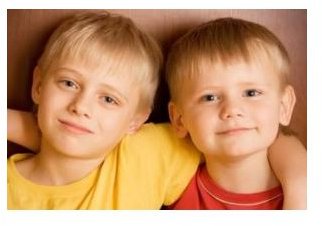Types of Autism; Different Levels of Autism; Broader Autism Phenotype
Broader Autism Phenotype
Broader autism phenotype disorder results in children with personality, social, and language behaviors that do not fit the Diagnostic and Statistical Manual of Mental Health Disorders diagnostic criteria for autism. Broader autism phenotype is also commonly known as BAP.
The disorder is similar to autism and asperger syndrome in many ways. However, the traits are not as severe as autism. Many believe broader autism phenotype to be a pervasive development disorder. However, this is untrue and broader autism phenotype falls under the pervasive development disorder not otherwise specified (PDD-NOS).
The PDD-NOS diagnosis is for people who fall under the PDD category but cannot be categorized by any other disorder. This condition is much milder than autism but is more sever than asperger syndrome. The symptoms are similar to those of autism with some charactertics visible and others not. Broader autism phenotype is commonly known as atypical autism.
The behavior of individuals suffering from broader autism phenotype have adaptive value and often times does not come to clinical attention. The condition is only realized when the individual has restricted interests and unusual difficulties in getting along with other children in the classroom. The condition can be identified by a test known as social responsiveness scale.
Symptoms of Broader Autism Phenotype
The symptoms commonly found in individuals suffering from broader autism phenotype are milder versions of autism symptoms. These may include:
-
Social shyness
-
Difficulty in making friends
-
Issues with understanding social indications
-
Prefers a systematic schedule
-
Compulsive behavior
-
Obsessive behavior
Genes
This disorder is a permanent one and stays throughout the life of the child. An adult with broad autism phenotype has more chances of having multiple kids with broader autism phenotype than other parents have.
Largely, research has concluded this condition to be genetic and people within the broader autism phenotype range are more likely to have siblings or children with this disorder. In fact the risk of autism recurrence among siblings in families is up to two hundred times the risk than in other cases. This was concluded by a study carried out by students from The University of Iowa.[1]
Conclusion
Research in autism is ongoing and each study brings us closer to a possible cause for broader autism phenotype. Various different teams are also researching probable cures for broader autism phenotype disorders.
Parents who feel their children might be suffering from autism must get them tested as soon as possible. It is important to be diagnosed early with an effective treatment plan. The chances of being cured fully are low, but chances are the degree of the disorder might minimize.
It is advisable to contact one of the many support organizations to find a list of therapists and doctors who specialize in this disorder. Next, it would be beneficial to get an evaluation of the child. This would be done, free of cost by the school authorities. The school will evaluate the child through a variety of tests and draft an Individualized Education Plan (IEP) for the child.
References
[1] https://ajp.psychiatryonline.org/cgi/content/abstract/154/2/185
